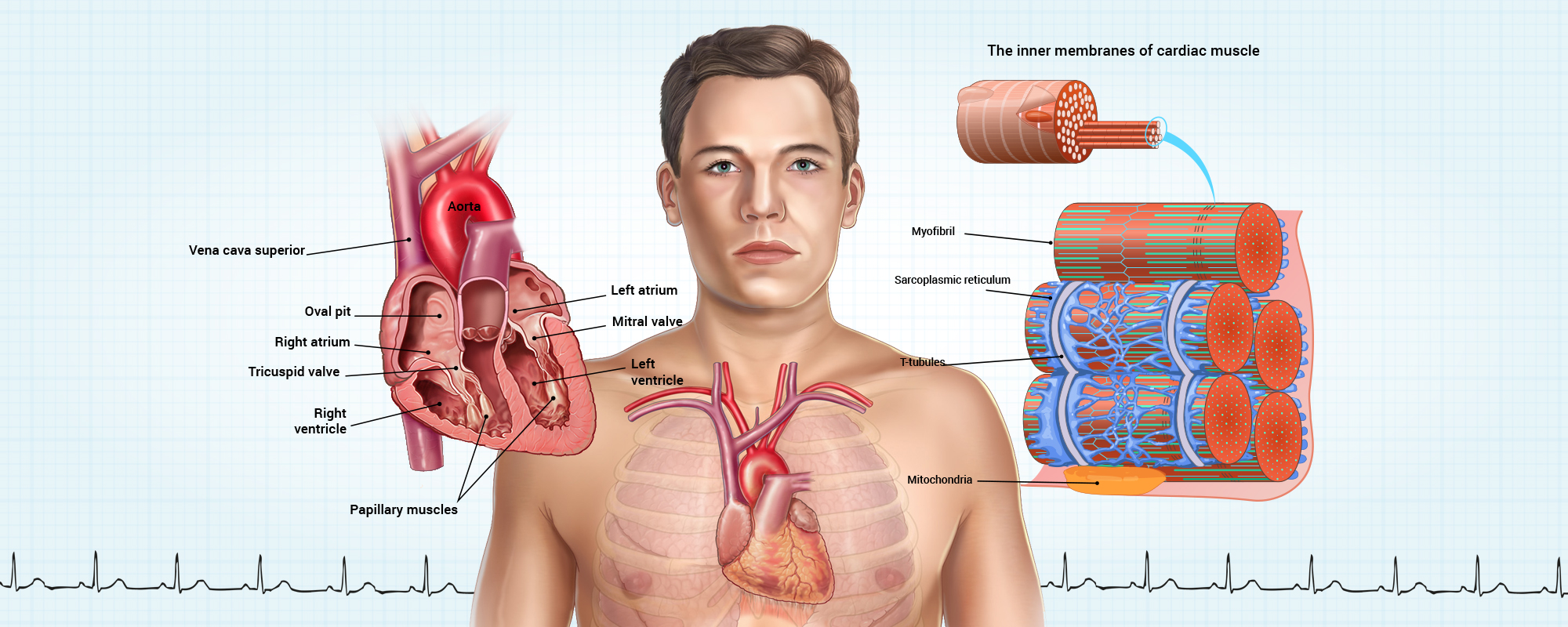
The heart is a hollow muscle with the primary function of pumping blood around the body. When the heart beats or contracts, the blood is pushed into the vessels that deliver the body with blood. Between each stroke the heart refills with blood, which is ejected again. At rest your blood volume passes through the heart once per minute. During an average life span, the heart contracts between 2.5 to 3 billion times.
In many ways it may be illogical to study the cardiac function without simultaneously examining the body’s blood vessels and their functions (circulatory physiology). These two systems, the heart and circulation, are both anatomically and physiologically connected, and together we call them the cardiovascular system. For clarity, we nevertheless present these two systems separately.



